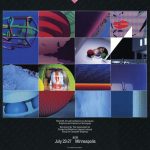SIGGRAPH 1984: CAD Show
Chair(s):
Co-Chair(s):
- Richard A. Weinberg
-
- Fifth Generation Graphics Inc.
- Richard M. Mueller
-
- Control Data Corporation
Location:
Minneapolis, Minnesota, United States of America
Dates:
July 23rd-27th, 1984
Art Show Overview:
As is clear to those who habitually attend the SIGGRAPH conference, the exhibition is different this year. In it are, among other things, a ski boot, a remote control device, hand-colored images of an arched doorway, and a computer game that explains machine logic. The common element uniting these seemingly disparate projects is that they demonstrate current applications of computers to design problems. In each of them the computer played a significant role in the design and, often, in production.
The point of view illustrated in the exhibition is that the computer will, as is so often said, serve as a tool in helping with various aspects of our work. More important, however, the computer is viewed here as having the potential for becoming a medium capable of altering our ways of thinking about our work. The exciting objective for computer-supported design at this time is to go beyond mimicking past media (as all new media do at their inception) and continue to develop processes and formal structures that are inherent to the computer’s distinct characteristics.
Patrick Whitney, Chairman
Design Arts Exhibition Committee
Committee(s):
- Patrick Whitney
- Del Coates
-
- Santa Fe University
- San José State University
- Muriel Cooper
-
- Massachusetts Institute of Technology
- Tadashi Ikeda
-
- Osaka University of Art
- Darcy Gerbarg
-
- New York University
- Columbia University
- School of Visual Arts
- Dale Fahnstrom
- Darcy Gerbarg
-
- New York University
- Columbia University
- School of Visual Arts
- Copper Frances Giloth
-
- Real Time Design
- University of Massachusetts/Amherst
- Kristina Hooper
-
- Atari Sunnyvale Research Laboratory
- Tadashi Ikeda
-
- Osaka University of Art
- Aaron Marcus
-
- Aaron Marcus and Associates
- Charles Owen
- Patrick Whitney
- Jon Elliot
- Carlos Latorre
- Jaime Douthit Louyeh
- Suzanne Richards
- Peter Spreenberg
- Darlene Swierczek
General Committee:
Visual Proceedings:
View PDF: [SIGGRAPH 1984: CAD Show]
Additional Images:
Acknowledgements:
Editor
Cheryl Kent
Whitney and Kent, LimitedCommunication Development and Evaluation
C.G. Screven
University of Wisconsin – MilwaukeeSupporting Organizations
Cray ResearchGraduate School of Architecture and Urban Planning
University of California – Los AngelesInternational Neon Products Incorporated
Institute of Design
College of Architecture and Design
Illinois Institute of TechnologyVisible Language Workshop
Massachusetts Institute of Technology
Exhibition Artworks:
-
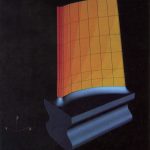
Aluminum Wheel Modeling
[C. Hayden Hamilton] [PDA Engineering]
Categories: [Design] -

Arched Doorway
[John Heile] [Ralph Knowles]
Categories: [Architecture] [Design] -

Car Interior Rendering
[Raymond Cannara] [Chrysler Corporation]
Categories: [Design] -
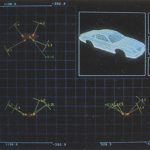
Car Rendering Software
[General Motors] [David R. Warn]
Categories: [Design] -
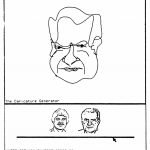
Caricature Generator
[Susan Brennan]
Categories: [Design] [Interactive & Monitor-Based] -

Century City
[Welton Beckett Associates]
Categories: [Architecture] [Design] -
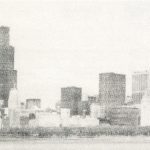
Chicago Skyline
[Skidmore, Owings & Merrill]
Categories: [Architecture] [Design] -

Complex Floor Plans
[Continental Graphics]
Categories: [Architecture] [Design] -
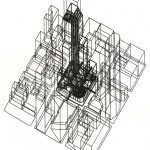
Composition Perspectives
[Skidmore, Owings & Merrill]
Categories: [Architecture] [Design] -

Computer-Generated Image of Le Corbusier...
[William Jepson] [Brian Ten]
Categories: [Architecture] [Design] -

Computer-Generated Image of William Morr...
[Applied Research of Cambridge]
Categories: [Architecture] [Design] -

Disk Camera
[Eastman Kodak Company]
Categories: [Design] -
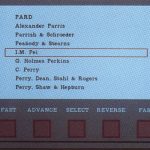
Electronic Archive
[Architecture Machine Group]
Categories: [Design] [Interactive & Monitor-Based] -

Electronic Classrooms
[Brown University]
Categories: [Design] [Interactive & Monitor-Based] -

Electronic Maintenance Manual: Interacti...
[Brown University]
Categories: [Design] [Interactive & Monitor-Based] -

Electronic Newspaper NewsPeek
[Architecture Machine Group] [Walter Bender]
Categories: [Design] -

Experimental Car
[Guiseppe Delena] [Ford Motor Company]
Categories: [Design] -

Exploded Perspective
[Skidmore, Owings & Merrill]
Categories: [Architecture] [Design] -

Flight Simulator
[J. Jaech] [R. Linder]
Categories: [Design] -
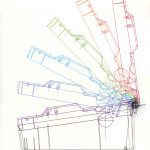
High-Speed Printer
[Advanced Matrix Technologies]
Categories: [Design] -

Highrise Office Building
[Cranston/Csuri Productions]
Categories: [Architecture] [Design] -
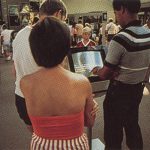
Knoxville World's Fair Exhibition
[Ramirez and Woods Inc.]
Categories: [Design] [Interactive & Monitor-Based] -
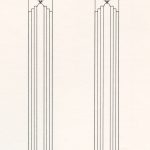
London Column
[John Heile] [Charles Jencks]
Categories: [Architecture] [Design] -

Los Angeles City Hall
[Albert C. Martin]
Categories: [Architecture] [Design] -

Metaform
[Michael Arent] [Aaron Marcus]
Categories: [Design] -
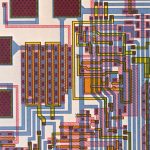
Microchip
[Calma]
Categories: [Design] -
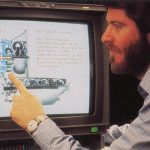
Movie Manual
[Architecture Machine Group]
Categories: [Design] [Interactive & Monitor-Based] -
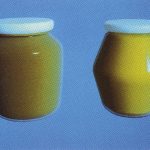
Mustard Jar
[Cranston/Csuri Productions] [Joe Kornick]
Categories: [Design] -
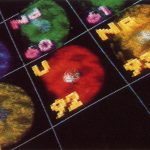
NOVA Opening
[WGBH-TV Design Department]
Categories: [Animation & Video] -
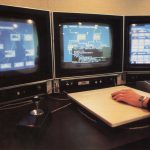
Program Visualization
[Computer Corporation of America]
Categories: [Design] [Interactive & Monitor-Based] -

Programming by Rehearsal
[Xerox Corporation]
Categories: [Design] -
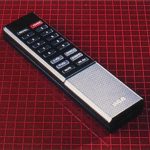
Remote Control Device
[RCA Corporation]
Categories: [Design] -
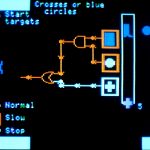
Rocky's Boots
[The Learning Company]
Categories: [Design] [Interactive & Monitor-Based] -
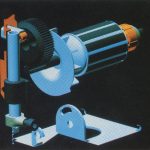
Sabre Saw
[Computervision Corporation]
Categories: [Design] -
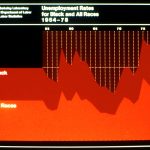
SEEDIS
[Aaron Marcus and Associates] [Michael Arent]
Categories: [Design] [Interactive & Monitor-Based] -

Seeing C
[Michael Arent] [Aaron Marcus]
Categories: [Design] -
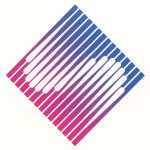
SIGGRAPH Symbol
[Peter Seitz] [Seitz Yamamoto Moss Inc.]
Categories: [Design] -
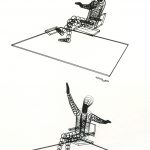
Simulating Human Physical Differences
[Alonzo Miranda]
Categories: [Design] -
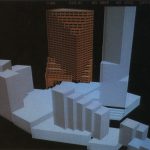
Site Massing Study
[Welton Beckett Associates]
Categories: [Architecture] [Design] -

Ski Shoe
[Ken Geer] [Nike, Inc.]
Categories: [Design] -

Starfighter
[Digital Productions, Inc.]
Categories: [Design] -
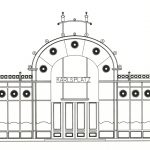
Student Elevations of Existing Buildings
[University of California at Los Angeles]
Categories: [Architecture] [Design] -

Sunlight and Shadow Studies
[Skidmore, Owings & Merrill]
Categories: [Architecture] [Design] -
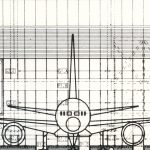
Terminal Four
[Scott Brownrigg and Turner]
Categories: [Architecture] [Design] -

TV Fishtank
[Atari Research Laboratory]
Categories: [Design] -
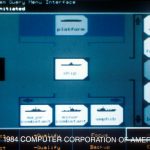
View System
[Computer Corporation of America]
Categories: [Design] [Interactive & Monitor-Based] -
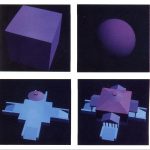
Volumetric Relationships: Palladio's Vil...
[John Heile] [William Jepson]
Categories: [Architecture] [Design]
Exhibition Writings and Presentations:
-
Title:
Computer-Aided Industrial Design
Author(s):
Category: Paper
Abstract Summary:
Computer-Aided Design (CAD) is destined to become the standard industrial design medium, for the same reasons it is revolutionizing other design and engineering fields. And many industrial designers are eager now to adopt it. Yet, only a fraction of CAD technology’s potential has found its way into the industrial design studio. High costs are partly to blame, but even as costs decline, a more fundamental reason accounts for the slow adoption: the industrial designers’ needs are so disparate that no single CAD system available today, has scope enough to fulfill them all.
[View PDF]Title: Information, Computers and Design
Author(s):
Category: Paper
Abstract Summary:
The Dilemma of the Specific and the General
In the Yucatan peninsula, corn is planted by Indian farmers in the same way it was done hundreds of years ago. The farmer wears a sack filled with seed slung over one shoulder. As he walks the field’s rows, he uses a long stick to make holes in the ground into which he drops seeds. Although the stick is a simple tool, it is not naive. It has features that make it well-suited for its task: it is long enough so the farmer can make the hole without bending to the ground; and, the end of the stick is sharpened to a point to make the hole for the seed.
Title: What Good is a Computer to an Architect?
Author(s):
Category: Paper
Abstract Summary:
What good is a computer to an architect? Palladio found pen and paper perfectly adequate, after all. And it is hard to imagine Frank Lloyd Wright at a keyboard. (It just doesn’t go with a cape and cane.) The most sophisticated piece of technology on most architects’ desks, even today, is an electric pencil sharpener.
[View PDF]
